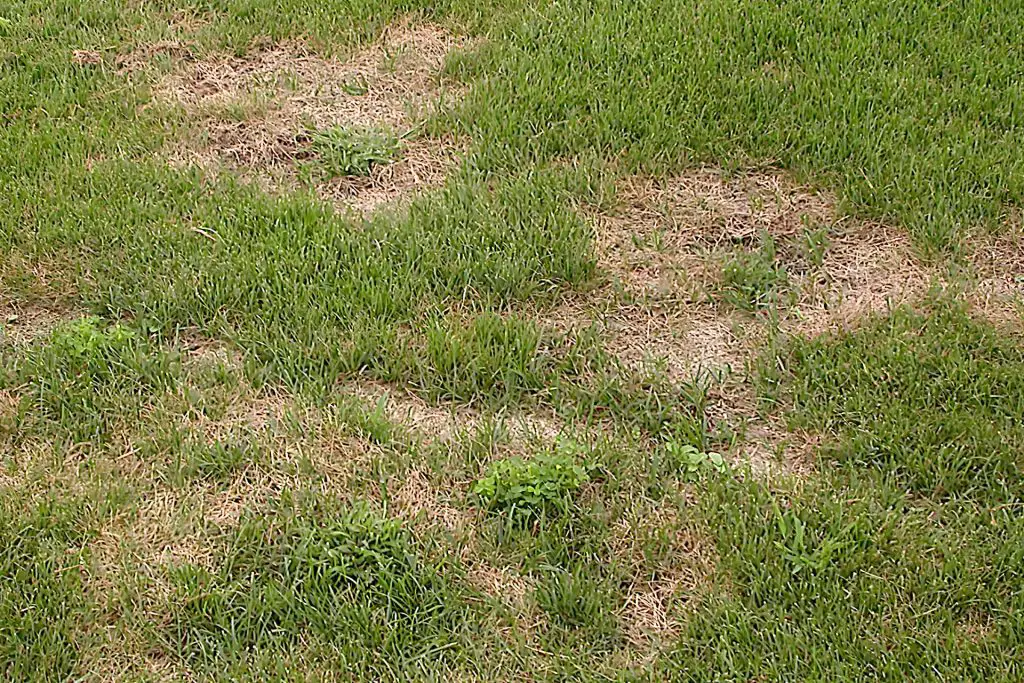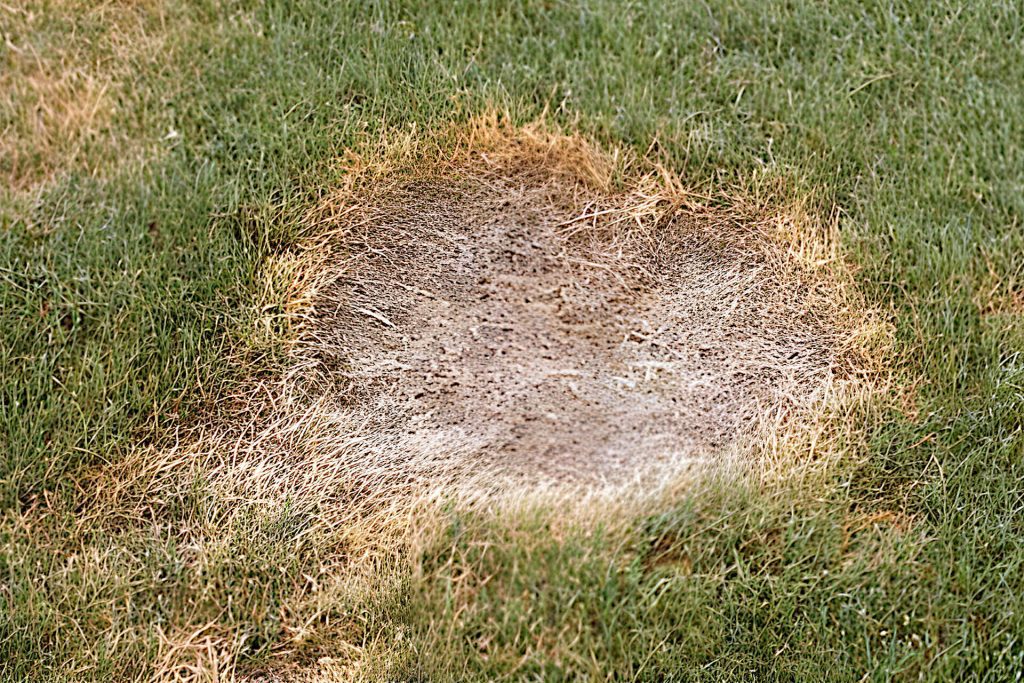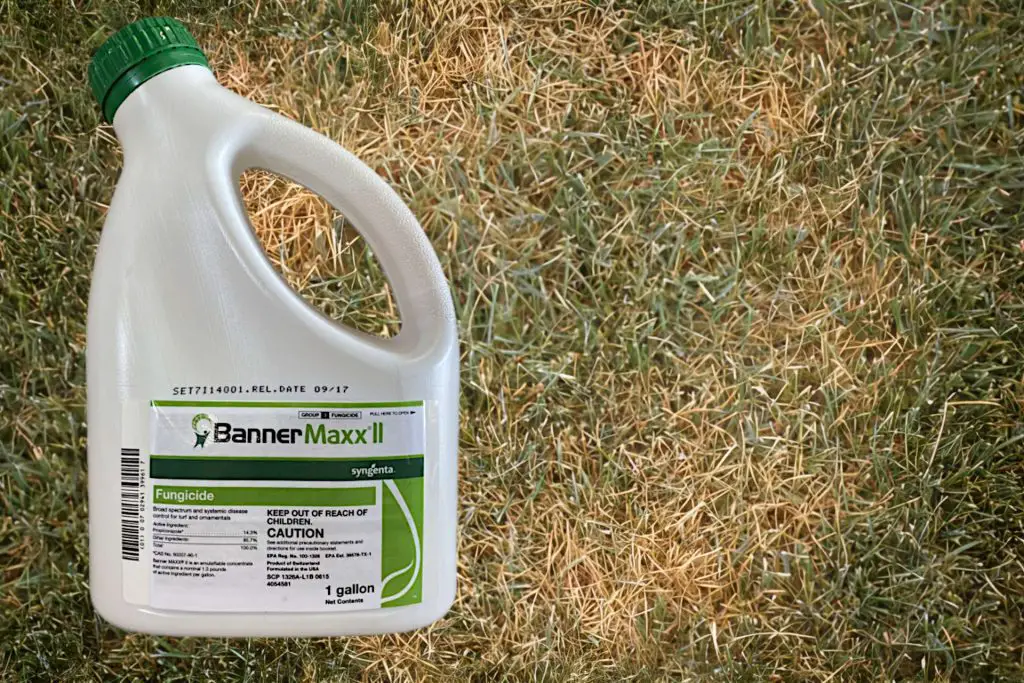Summer Patch Lawn Disease: The Silent Killer of Turfgrass
Summer patch lawn disease is a destructive lawn disease that can sneak up and devastate grass seemingly overnight. Caused by the fungus Magnaporthiopsis poae, the summer patch primarily impacts Kentucky bluegrass and annual bluegrass, but can also affect tall fescue, perennial ryegrass, and fine fescues. If left unchecked, this disease can lead to expansive dead patches that require reseeding or resodding to repair.
The good news is summer patches can be effectively managed with proper lawn care practices and fungicide applications at the right times. Read on to gain a comprehensive understanding of this formidable foe – from its symptoms and diagnosis to proven treatments and preventive measures. With the insights below, you’ll be well-equipped to defend your lawn against the silent killer this summer.
Understanding Summer Patch Lawn Disease

Summer patch, also known as poa patch, is a disease-specific to cooler regions and mainly affects lawns in northern parts of North America. It is incited by the root-infecting fungus Magnaporthiopsis poae (previously known as Magnaporthe poae). This lawn fungus mostly attacks Kentucky bluegrass and annual bluegrass, the two most prevalent cool-season grass species used in home lawns.
The disease gets its name because it typically appears during hot, humid weather in summer. Symptoms start emerging in early to mid-summer and peak damage is seen between July and September when daytime temperatures are consistently above 80°F.
Summer patch lawn disease occurs in circular patches up to several feet in diameter. Affected areas first turn yellow, then reddish-brown, and eventually die off completely. The disease can spread rapidly under conducive conditions, causing expanding areas of thinning and dead grass.
Symptoms and Signs
On Kentucky bluegrass, the summer patch begins as light green, water-soaked spots that turn yellowish or reddish-brown. Irregular zones of dead turf eventually develop with sharp margins between healthy and diseased areas.
On annual bluegrass, initial symptoms appear as small, dark brown to black spots that rapidly expand into large patches. The spots often merge together, resulting in large dead areas.
In both grasses, the leaves easily pull away from the crowns of affected plants. Roots are dark brown, rotted, and lack healthy, white root hairs. Microscopic inspection reveals dark runner hyphae growing on and within diseased plant tissues.
The symptoms of summer patch lawn disease can sometimes be confused with drought stress or other diseases like necrotic ring spot. Examining the roots and conducting lab tests are required for accurate diagnosis.
Diagnosis and Identification


Visually diagnosing summer patch can be challenging, even for experienced lawn care experts. The symptoms closely resemble those caused by drought stress, necrotic ring spot, and dog urine damage.
Confirming summer patch lawn disease requires careful examination of the roots and submission of samples to a diagnostic lab for fungal isolation and identification. The fungal structures of M. poae can be observed under a microscope growing on and within infected plants.
Lab analysis using molecular techniques can positively identify the pathogen’s DNA and confirm summer patch as the cause of lawn damage. An accurate diagnosis is key to effective management.
Disease Cycle
Magnaporthiopsis poae survives the winter within infected plant crowns and roots. In spring, the fungus becomes active again and produces spores called conidia. These spores germinate and colonize the root hairs and crowns of susceptible grasses.
Under warm, humid conditions in summer, the fungus penetrates the plant tissues and causes the roots to rot. The infected roots are unable to take up water and nutrients, causing the foliage to wilt, yellow, and eventually die.
As the roots and crowns decay, the fungus produces more spores that can spread to adjacent plants. Optimal temperatures around 80-90°F fuel explosive growth of M. poae and accelerate disease development.
The lifecycle repeats with the fungus persisting in infected plant debris through winter. The disease re-emerges next summer if conditions are favorable.
Disease Development Factors
Summer patch occurs most frequently during periods of high temperatures, humidity, and rainfall. Hot and humid weather from June through September promotes vigorous growth of the M. poae fungus.
Low air circulation and compacted soil create optimal conditions for infection. Heavy thatch buildup encourages disease development by trapping moisture near the soil.
Mowing too low is an inviting factor as it causes added stress on the turfgrass. Low mowing compromises root health and reduces the plant’s defenses. High foot traffic and soil compaction further predispose lawns.
Excessive irrigation and overfertilization with nitrogen also favor disease development. Densely growing turf with excessive shoot growth is especially susceptible.
Cultural Control Practices
Implementing proper cultural practices is critical for reducing summer patch severity. The key goals are promoting turfgrass health through proper mowing, irrigation, fertilization and improving soil conditions.
| Cultural Practice | Timing | Benefits |
|---|---|---|
| Core Aeration | Early spring or mid-fall | Relieves compaction, improves drainage and rooting |
| Dethatching | Early fall | Removes dead debris harboring fungus |
| Drainage Management | As needed | Eliminates standing water; installs drainage tiles |
| Mowing Height | Raise to 3-4″ before summer | Deeper roots; never remove >1/3 blade |
| Fertilization | Spring and fall nitrogen | Avoid excess N in summer |
| Irrigation | Deep, infrequent | Allows soil to dry between cycles |
| Reduce Traffic | During peak summer | Minimizes soil compaction |
| Topdressing | After core aeration | Smooths surface; aids recovery |
Aerating in early spring or mid-fall is highly beneficial, creating holes that allow better water infiltration and relieve compaction. Dethatching helps remove accumulated layers of dead grass tissue that trap moisture and harbor the fungus.
Improving drainage in chronically wet areas also helps reduce disease pressure. Installing drainage tiles or grading the lawn can alleviate standing water.
Raising mowing height to 3-4 inches going into summer promotes deeper rooting. Never remove more than 1/3 of the grass blade when mowing.
Proper fertilization is key – make light nitrogen applications in spring and fall, and avoid heavy nitrogen in summer.
Irrigate deeply and infrequently to encourage deeper rooting. Allow the soil to partially dry out between watering.
Reduce foot traffic during peak summer to minimize soil compaction and plant stress.
Topdressing with compost or sand after aerating fills in holes and aids turf recovery.
Chemical Control Options


Preventive fungicide applications starting in early summer provide the most effective control of summer patch disease. Rotating between different fungicide classes is critical to combat resistance issues.
Demethylation Inhibitors (DMIs) are the top recommendation for summer patch prevention and cure. DMIs inhibit ergosterol biosynthesis which disrupts fungal cell membrane formation. Some key DMIs include:
| Active Ingredient (Class) | Fungicide Class | FRAC Code | Product Name(s) |
|---|---|---|---|
| Propiconazole | DMI | 3 | Banner MAXX, Propiconazole Pro |
| Myclobutanil | DMI | 3 | Eagle, Systhane |
| Tebuconazole | DMI | 3 | Torque, Tebuconazole 3.6F |
| Metconazole | DMI | 3 | Tourney |
| Triticonazole | DMI | 3 | Trinity, Triton |
Apply DMI fungicides preventively starting in early June through September. Reapply every 14-28 days depending on product and conditions. Tank mixing DMIs with QoI fungicides boosts control.
QoI fungicides (Quinone Outside Inhibitors) disrupt energy production in fungi. Common QoIs for the summer patch include:
- Azoxystrobin – Apply curatively for advanced infections.
- Pyraclostrobin – Highly systemic with 28-day residual.
- Fluoxastrobin – Provides broad-spectrum disease control.
For curative control of active infections, apply thiophanate-methyl (Group 1 fungicide) alone or mixed with propiconazole. Fluazinam (Group 29) is another effective option for an active summer patch.
Always check label directions for mixing compatibility, turfgrass tolerance, and re-entry intervals. Limit QoI usage to avoid resistance development. Combine chemical control with cultural practices for best results.
Final Thoughts: Summer Patch Lawn Disease
Summer patch lawn disease can escalate into a turfgrass nightmare if left unchecked. But armed with vigilance and preventive care, this disease can be effectively managed.
Consistent monitoring, early diagnosis, and prompt treatment are critical for stopping the summer patch in its tracks. Adopting smart cultural practices tailored to your specific environment is key to preventing favorable conditions.
With the combination of judicious fungicide use, vigilant monitoring, and resilient turfgrass management, your lawn can thrive all summer long free of the silent killer. Stay attentive and proactive, and your turf will be primed to overcome any threats.
Frequently Asked Questions
What are the first signs of summer patch?
Initial symptoms include yellow, water-soaked spots that turn reddish-brown. Irregular zones of blighted turf develop with sharp margins between healthy and dead areas.
What’s the difference in symptoms between summer patch and necrotic ring spot?
Summer patch occurs in irregular patches while necrotic ring spot forms defined circular rings. The roots are darker brown with summer patch.
When should I apply fungicides to prevent summer patch?
Start preventive fungicide applications in early June and reapply every 14-28 days through September. Rotate between DMI and QoI fungicides.
What’s the best way to improve lawn drainage?
Aerating helps alleviate soil compaction and allows better water infiltration. Topdressing with compost smooths the surface. Installing drainage tiles can help in soggy areas.
Should I dethatch in the spring or fall to prevent summer patch?
Dethatching is best done in early fall after grass growth slows. Spring dethatching can stress turf before summer. Remove no more than 1/2 inch of thatch layer annually.
How low should I mow my lawn to avoid summer patch issues?
Raise cutting height to 3-4 inches for summer. Never remove more than 1/3 of the blade when mowing. Longer grass promotes deeper roots.
Can summer patch spread between lawns?
Yes, wind and splashing water can disperse spores to neighboring lawns. Following proper cultural practices simultaneously on nearby lawns helps limit spread.
How long do I have to wait to reseed areas damaged by summer patch?
Wait 6-8 weeks after symptoms subside before reseeding. This allows the fungus in the soil to die back before replanting grass.
What’s the best nitrogen fertilizer schedule to avoid summer patch?
Make periodic light applications in spring and fall. Avoid heavy nitrogen in summer – switch to low N slow-release fertilizer applied once mid-summer.
Videos
Resources
- NC State University: Summer Patch in Turf
- University of Maryland: Summer Patch DiseaseOf Lawn Grasses

